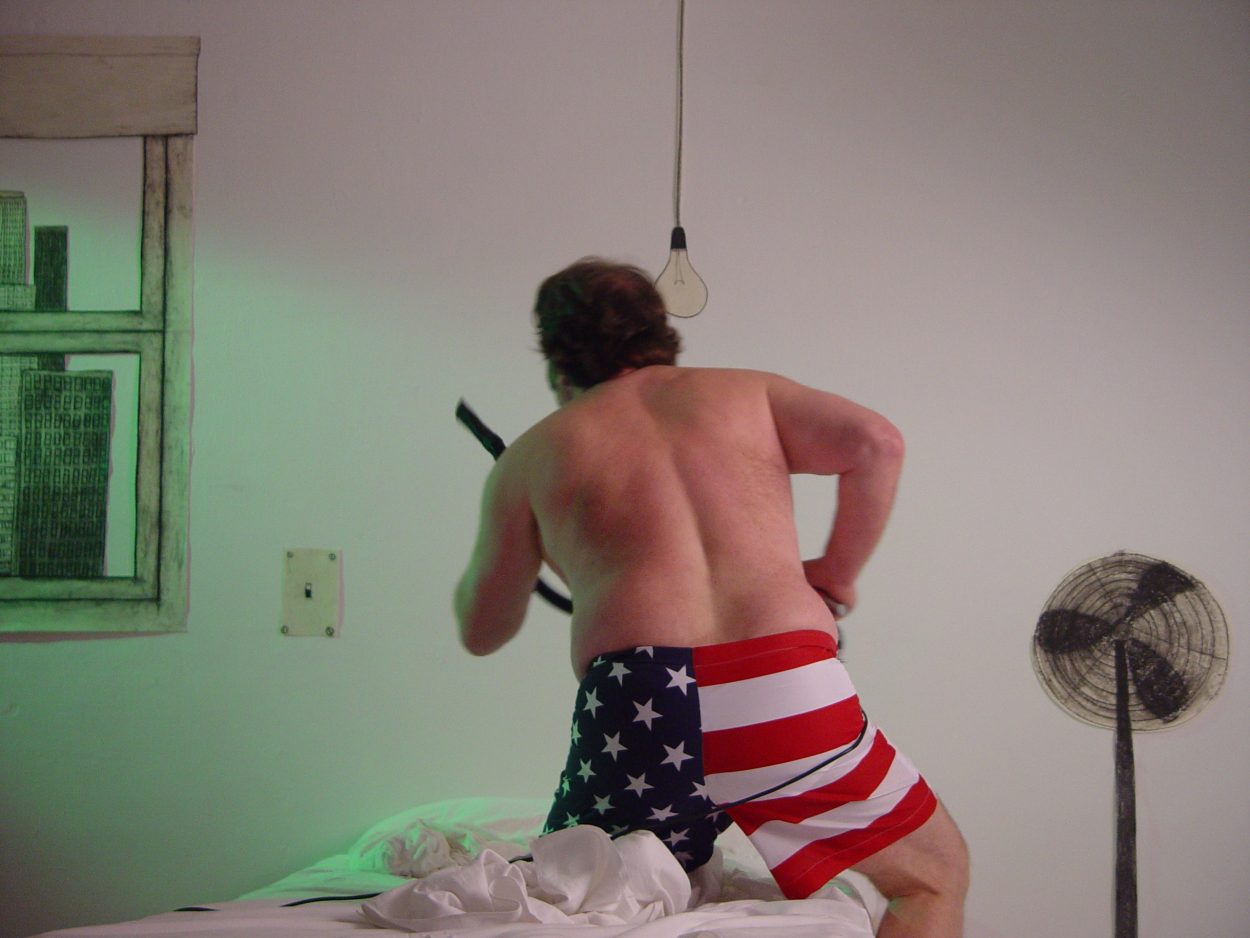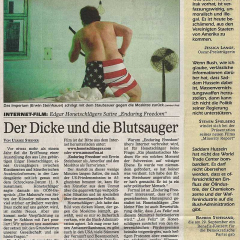Vienna 2001
an art installation and a film is an ironic portrayal of the United States in the aftermath of 9/11. AMERICA is represented by a corpulent actor who tries to catch some sleep. He/she is in a state of saturation when attacked and he reacts with clumsiness and helplessness. Tiny drawn mosquitoes represent the TERRORISTS and the scale of threat they really impose on the omnipresent empire. No matter how hard America tries to rid itself from attacks and how much security it will come up with, there will always be another “mosquito”. At first the protagonist retaliates with a vacuum cleaner that almost seems like a phaser out of STAR TREK, but he fails and the menace escapes. Never getting a rest “the empire” finally succeeds in killing the intruder with the NEW YORK TIMES. The title of the film is the same as the official title of America’s “peace keeping mission” in Afghanistan and its ‘anti terror war’ officially called OPERATION ENDURING FREEDOM.
This piece is the first chapter in a series of drawn two-dimensional sets brought alive by professional actor and turned into films. In art venues the sets were attached to walls combined with video projections of the films that had been shot using them. The other chapters being THE SCENT OF SNOW 2003, TARZAN 2011, LONGING 2012 and its climax the feature film LOS FELIZ 2016. Please find an essay by the Viennese Art Historian Christina Natlacen in German language below. All those pieces reflect my questioning the concept of central perspective, a mathematical concept that fools the eye indicating false depth and regrettably having become the lone standard reduces our perception since Masaccio succeeded in inventing it. The suprematists in the early 20th century thought of four, five, six and seven dimensions. How come we got stuck with three? How come it became the only one way of seeing and perceiving the world we depict? The Byzantines had invented the reverse perspective that we cannot detect as what it is anymore. Perceiving the central perspective realised in a fresco or a canvas is something that is not given to us by birth, it needs to be learned – a Byzantinian would not have been able to decipher it (to see it), neither did Asians or people from other parts of the world before Westerners reached their shores. See Edwin Abott Abbot in his book Flatland and Pavel Florensky for in depth treatment. The 3D principle was carried on into the medium of film which keeps on trying to pretend to evoke fake depth and later on into the digital world.
Drawn film set for the movie. Scroll down for the 4 minute film.
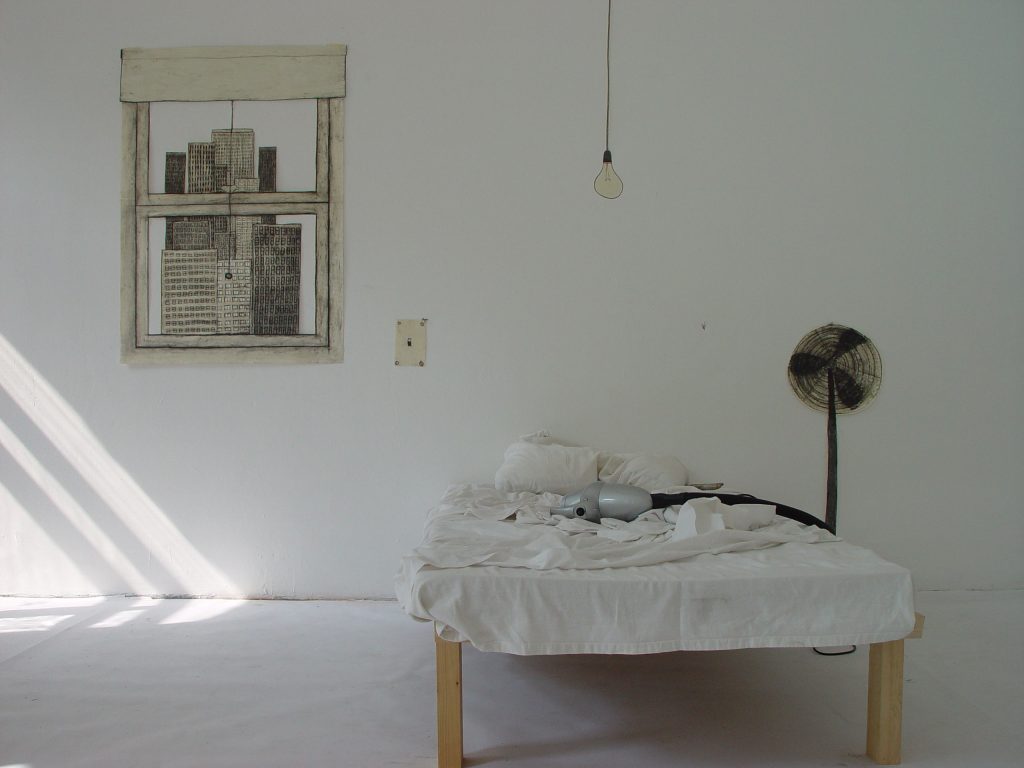

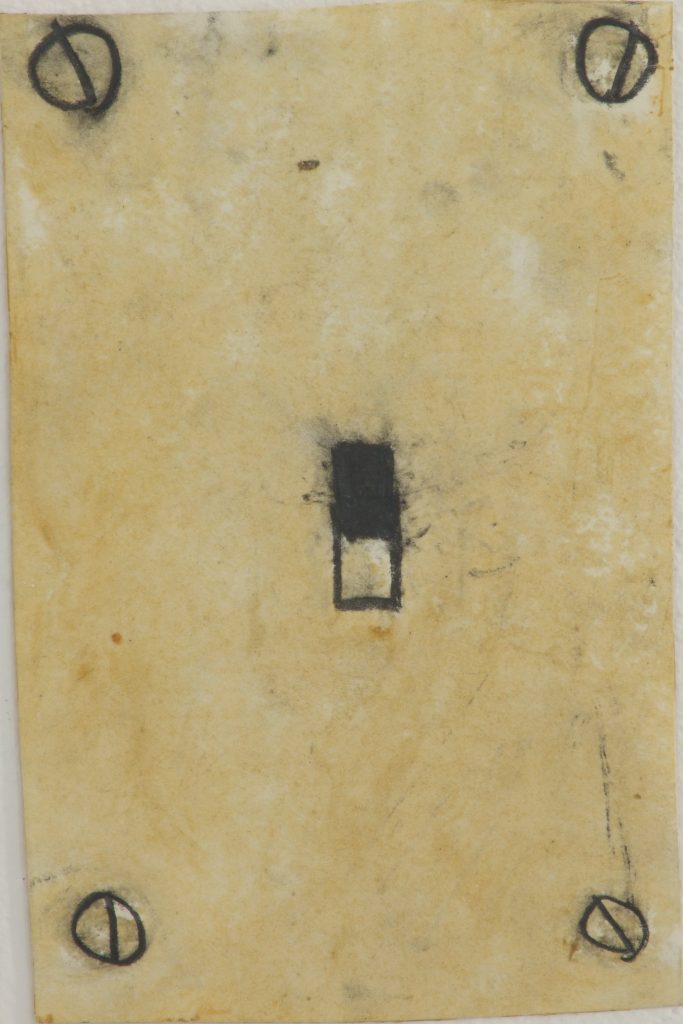
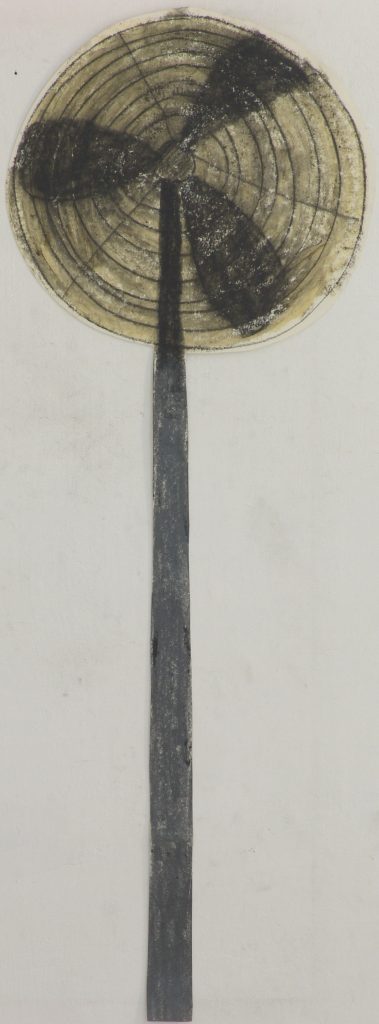

The piece is in the collection of the MUDAM LUXEMBOURG.
Vienna 2001, 4 min
starring Erwin Steinhauer
camera Thomas Prodinger
editor Kurt Hennrich
producer Gabriele Kranzelbinder, Edgar Honetschläger
drawn, written and directed by Edgar Honetschläger
